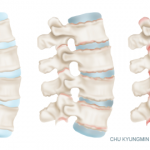Reactive arthritis has proved to be a diagnostic & therapeutic challenge due to its diverse presentations.


Michael J. Cammarata, MD |
Reactive arthritis has proved to be a diagnostic & therapeutic challenge due to its diverse presentations.
Maksymowych et al. assessed the frequency of axial spondyloarthritis (axSpA) according to extra-articular presentation and human leukocyte antigen B27 (HLA-B27) status and sought to identify features that distinguish patients with axSpA from those with non-specific back pain. Their data support recommendations that patients with chronic back pain and extra-articular features related to axSpA be screened for axSpA with MRI and referred to a rheumatologist.

The FDA has approved bimekizumab-bkzx for the treatment of adults with psoriatic arthritis, non-radiographic axial spondyloarthritis and ankylosing spondylitis.

Yvonne M. van der Kraan, BSc, Andrew Lui, PT, DPT, Anneke Spoorenberg, MD, Suzanne Arends, PhD, & Lianne S. Gensler, MD |
‘Physical therapy is a mainstay of managing rheumatic diseases, but what’s the evidence, how do we monitor, and what types of therapy should we advocate?’ asks Physician Editor Bharat Kumar, MD, MME, FACP, FAAAAI, RhMSUS. ‘Here, we provide some practical recommendations for the everyday rheumatologist.’ Physical activity, including occupational and recreational activities, is one of…

David S. Pisetsky, MD, PhD |
Our understanding of (axSpA) has really changed, especially with regard to male-female differences. In this report, we identify important research on axSpA presented at ACR Convergence 2024, summarize the abstracts and comment on why each is important, addressing the relevance for clinicians and the potential impact on future research.

Anna E.F. Hadsbjerg, Simon Krabbe, Nora Vladimirova, Adrian Ciurea, Kristyna Bubova, Monika Gregová, Michael Nissen, Burkhard Moeller, Raphael Micheroli, Susanne Pedersen, Jakub Zavada, Ziga Snoj, Karlo Pintaric, Bjorn Gudbjornsson, Ziga Rotar, Iris Eshed, Iwona Sudol-Szopinska, Kasper Gosvig, Torsten Diekhoff, Robert Lambert, Manouk de hOoge, Helena V.G. Elmo, Merete Hetland, Lykke Oernbjerg & Mikkel Ostergaard |
Hadsbjerg et al. compared assessments of sacroiliac joint MRIs in local MRI reports from routine care in five European countries with re-reads by central experts in patients with a diagnosis of axial spondyloarthritis (axSpA) or psoriatic arthritis (PsA) to estimate the extent of over- or under-reporting of features and misclassification.

At this ACR Convergence 2024 session, two experts spoke about identifying difficult-to-manage patients with spondyloarthritis, differentiating active disease from fibromyalgia & therapy selection in these patients.

Axial spondyloarthritis (axSpA) is a complex, immune-mediated inflammatory disorder characterized by inflammatory back pain and axial arthritis. Typical of other diseases in the spondyloarthritis family, the clinical phenotypes can be diverse, and an array of comorbidities often accompanies the spinal disease. “In this Meet the Professor Session at ACR Convergence 2024,” says Christopher Ritchlin, MD,…

Studies show that patients with difficult-to-treat axial spondyloarthritis had more disease activity and greater peripheral involvement, with extra musculoskeletal manifestations and fibromyalgia. The ACR Convergence 2024 session on Difficult-to-Manage Spondyloarthritis will focus on patients for whom first- and second-line therapies have failed or who have persistent extra-axial manifestations of disease despite these treatment options. The…

Can a treat-to-target strategy achieve better outcomes for patients with spondyloarthritis? Insights from the latest data.